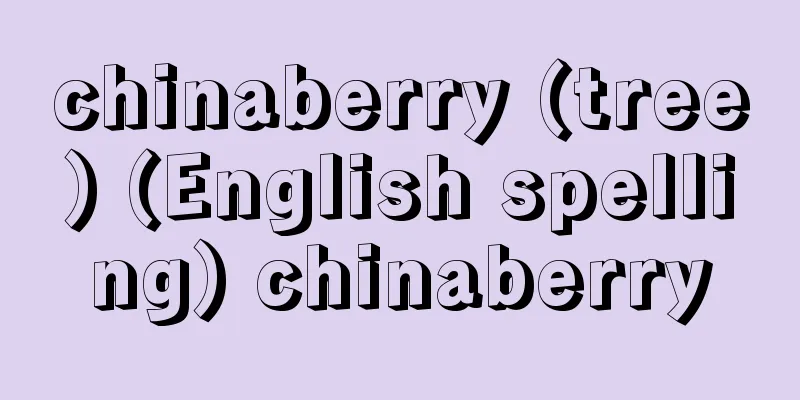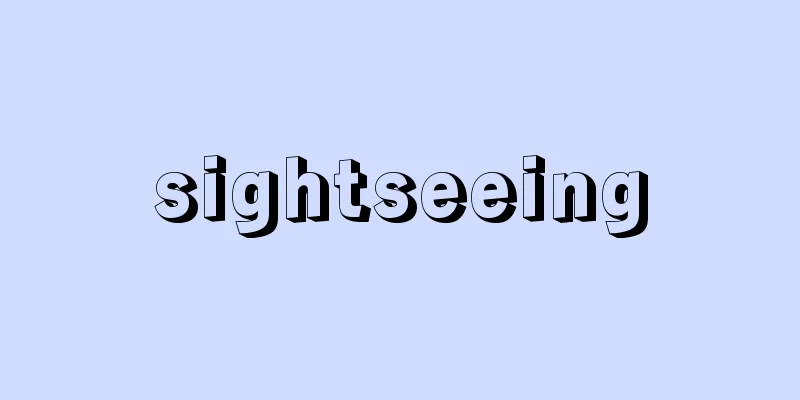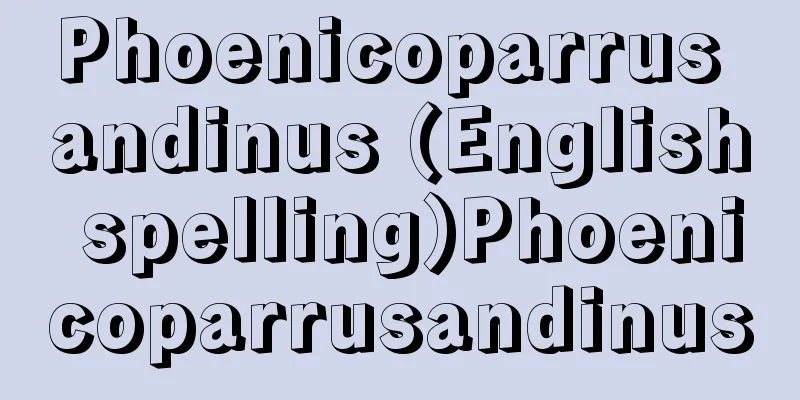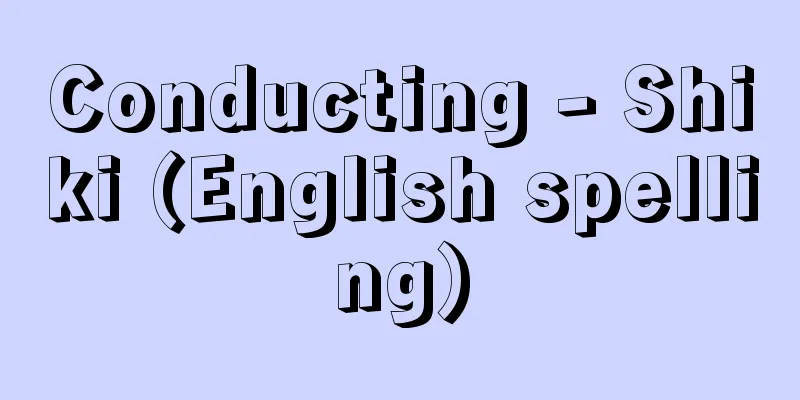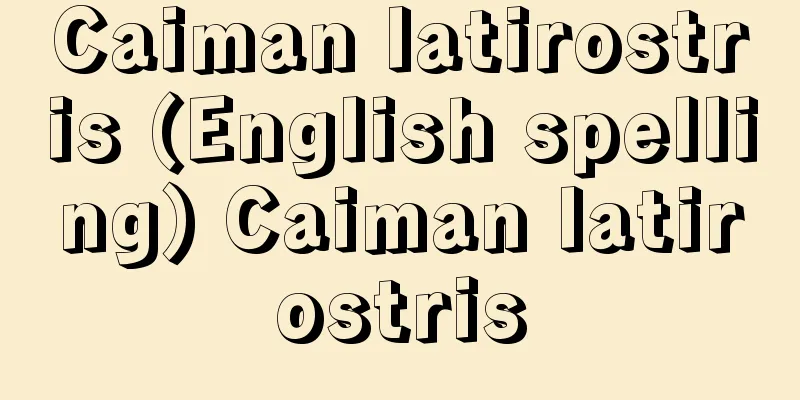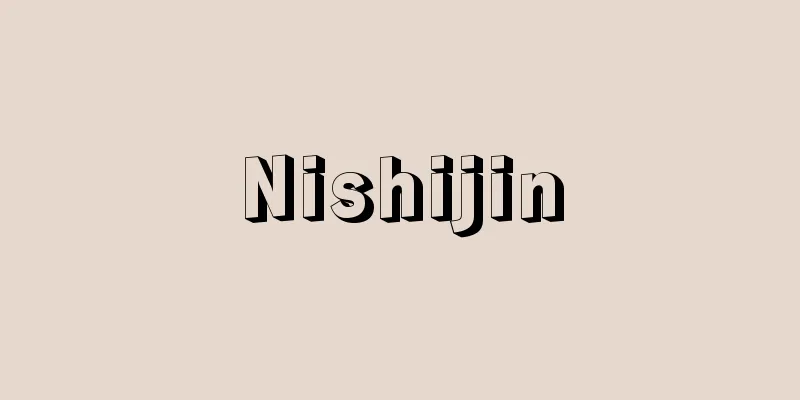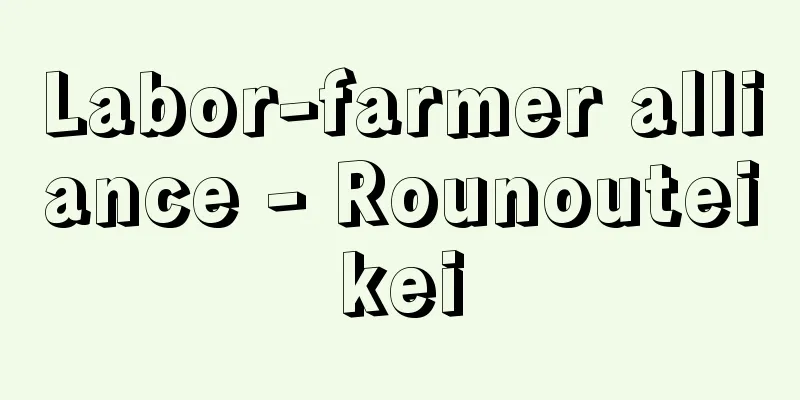Honorific language - Keigo

|
It is a specific language form used by a speaker (writer) to show respect for the listener (reader) or the person being discussed. For example, "A-san ga suru sodesu" is a polite expression of "A ga suru sodesu" (A does it). In the former, the speaker calls "A -san " and uses " nasaru " (does it) out of respect for the person being discussed, while using "desuzu" instead of "souda" ( souda ) to show respect for the listener. In this way, honorific language is a different language form that corresponds to non-honorific words, and its basic nature is that it is a different language form. However, even with the same phrase, on the other hand, there is also the phrase "A no yaro mo yagaru sodesu " (A does it too). In short, in Japanese, the language form changes depending on how you treat people, so this is called linguistic treatment or honorific expression. When honorific language is interpreted in a broad sense, it can be used synonymously with these, and there has been a trend in recent years, but normally it refers to an expression based on respect, as mentioned at the beginning. Honorific language is prominent in Japanese, Korean, Tibetan, Javanese, and other languages, but is said to be rare in Western languages. However, there are honorific expressions such as Would you ~ ? in contrast to Will you ~ ? in English, and Sie and vous (both equivalent to "you") in contrast to du and tu in German and French (both equivalent to "you"). [Toshiki Tsujimura] Types of honorific languageHonorific language is generally divided into three types: (1) honorific language that elevates the actions, state, or belongings of the other person or a third party (such as "Ossharu," "Kudasaru," "O-Utsukushii," and "Goseishū"); (2) humble language that lowers the actions, state, or belongings of oneself or one's side (such as "Moshiageru," "Itadaku," and "Setsutaku"); and (3) polite language that uses polite language regardless of the other person or oneself (such as "Otenki," "Gohan," "Desu," and "Masu"). However, among polite language, "Desu" and "Masu" are words that directly show respect to the other person, so they can be called "interpersonal honorific language" and can be broadly distinguished from other polite language, honorific language, and humble language that are used for the subject of expression (the person, thing, or matter being discussed) (subject honorific language). In that case, it would be appropriate to limit the name of polite language to "Desu" and "Masu," and call words like "Otenki" and "Gohan" beautifying words, etc., as they beautify the subject. In addition, there are various theories, such as the theory that honorific words are used for each object of respect, such as "respect for the person in question," "respect for the recipient," "respect for the listener," and "self-deprecation," and that words such as "mairu" (to visit) and "itasu" (to do) are used to maintain the speaker's dignity while also showing respect for the listener. [Toshiki Tsujimura] Honorific word structureHonorific words can be divided into two types in terms of structure: (1) those that use a specific word form (such as "Ossharu," " Nasaru ," and " Kudasaru "), and (2) those that add honorific components to ordinary words (i. Prefixed words such as "Okao" and "Gohon"; postfixed words such as " Musukosan " and " Ikusareru "; before and after words such as "Okasama - sama " and " Gokenkyu ni naru "). However, sometimes both (1) and (2) are used to form words such as "Omiramaresu" and "Okaisesuru." [Toshiki Tsujimura] Procedures for honorific expressions and interpersonal relationships When using honorific language, it is necessary to use and combine the various words listed above according to the relationship between the speaker, the listener, and the person being talked about. However, when expressing actions, the order of honorific language should be, as a rule, (1) according to the relationship between the people being talked about, (2) according to the relationship between the speaker and the person being talked about, and (3) according to the relationship between the speaker and the listener. For example, [Toshiki Tsujimura] Honorific language and respectful language awarenessHonorific language is thought to have originated as an expression of respect for beings (gods) beyond human power, and in the past it was primarily used to express feelings of respect. However, today, although honorific language is sometimes used with this awareness, it is primarily used based on the recognition of hierarchical and intimate relationships. In other words, there are various types, such as (1) honorific language based on the recognition of hierarchical relationships (honorific language used when speaking to superiors, older people, and seniors), (2) honorific language based on the recognition of intimacy (honorific language used when speaking to people one meets for the first time or people one has little acquaintance with), (3) honorific language based on the recognition of relationships of benefit (honorific language used by merchants to speak to customers, and honorific language used by patients to speak to doctors), (4) honorific language based on relationships of superiority and inferiority (honorific language used when speaking to government officials and representatives), and (5) honorific language used in public positions (honorific language used in broadcasts, lectures, etc.). In addition, honorific language is sometimes used to maintain one's own dignity, or when speaking about oneself as an expression of affection or humor. [Toshiki Tsujimura] Trends in modern honorific languageThe trends in modern honorific language include (1) a trend toward beautifying language and honorific language for interlocutors, (2) a decline in specific word forms, and (3) an expansion of relative usage. (1) and (2) can be seen as a trend toward simplifying honorific language, but the cause of (1) in particular can be cited as the general trend in modern society to view people without regard to their hierarchical relationship. This is because honorific language and humble language were originally created to reflect hierarchical relationships, while beautifying language and honorific language for interlocutors do not have such characteristics and are used to maintain one's own dignity or show respect only for the listener. Relative usage means changing the use of honorific language depending on the person you are speaking to, which is in contrast to the absolute usage in ancient times when gods and emperors used honorific language for themselves out of a sense of superiority (similar examples can be found in early modern daimyo, etc.). Incidentally, one trend in honorific language is from absolute to relative usage, but in modern times, there is a growing tendency to speak in the same way when talking about one's family members, as well as one's superiors at work, to outsiders, in the same way that one speaks about oneself, and this can be seen as a phenomenon within the trend mentioned above. [Toshiki Tsujimura] "Tokieda Makotoki's 'The Principles of Japanese Linguistics,' Chapter 5: The Theory of Honorific Language" (1941, Iwanami Shoten)" ▽ "Kindaichi Kyosuke's 'Japanese Honorific Language' (1959, Kadokawa Shoten)" ▽ "Tsujimura Toshiki's 'Modern Honorific Language' (1967, Kyobunsha)" ▽ "Tsujimura Toshiki's 'Historical Study of Honorific Language' (1968, Tokyodo Publishing)" ▽ "Tsujimura Toshiki (ed.), 'History of Honorific Language' (1971, Taishukan Shoten)" ▽ Miyaji Yutaka's 'Literary Theory', 'The Theory of Honorific Language' (1971, Meiji Shoin)" ▽ "Hayashi Shiro and Minami Fujio (eds.), 10 volumes of Honorific Language Lectures (1973-74, Meiji Shoin)" ▽ "Ohno Susumu and Shibata Takeshi (eds.), 'Iwanami Lectures on Japanese Language 4: Honorific Language' (1977, Iwanami Shoten)" ▽ "History of Honorific Language," edited by Miyaji Yutaka (1981, Meiji Shoin)" ▽ "Honorific Language in Business," edited by the National Institute for Japanese Language and Linguistics (1982, Sanseido)" ▽ "Honorific Language and Honorific Language Awareness -- A Comparison with 20 Years Ago in Okazaki," written by the National Institute for Japanese Language and Linguistics (1983, Sanseido)" ▽ "Collection of Honorific Language Essays -- Ancient and Modern," written by Sakurai Mitsuaki (1983, Meiji Shoin)" ▽ "Modern Honorific Language Research," written by Oishi Hatsutaro (1983, Chikuma Shobo) [Reference] |Source: Shogakukan Encyclopedia Nipponica About Encyclopedia Nipponica Information | Legend |
|
話し手(書き手)が聞き手(読み手)あるいは話題の人物に対する敬意に基づいて用いる特定の言語形式をいう。たとえば、「Aさんがなさるそうです。」は、「Aがするそうだ。」を敬語の言い方にしたものであるが、前者は、話し手が話題の人物Aに対する敬意に基づいて「Aさん」といい、「なさる」という言い方をする一方、聞き手に対しても「そうだ」のかわりに「そうです」を用いることにより敬意を表していることになる。このように敬語は、敬語でない語に対応する別の言語形式であるところにその基本的性格がある。ただし同じ言い換えでも、一方に「Aの野郎もしやがるそうだ。」のような言い方もあり、要するに日本語では、人をどのように待遇するかによって言語形式が変わるので、これを言語待遇または待遇表現とよぶ。敬語を広い意味に解する場合は、これらと同義語として用いられることもあり、近年そうした傾向もみられるが、普通は最初に述べたように敬意に基づく表現をさす。敬語は日本語のほか朝鮮語、チベット語、ジャワ語などに著しいが、欧米語には少ないといわれる。しかし英語のWill you ~ ?に対するWould you ~ ?の形、ドイツ語やフランス語のduやtu(ともに「おまえ」に相当)に対するSieやvous(ともに「あなた」に相当)など、敬語的表現がないわけではない。 [辻村敏樹] 敬語の種類敬語は、もっとも一般的には、(1)相手や第三者の動作・状態・所属物などを高めていう尊敬語(「おっしゃる」「くださる」「お美しい」「ご住所」など)、(2)自分または自分側の者の動作・状態・所属物などを低めていう謙譲語(「申し上げる」「いただく」「拙宅」など)、(3)相手・自分に関係なく物言いを丁寧にする丁寧語(「お天気」「ご飯」「です」「ます」など)の三つに分けられる。しかし、丁寧語のうち「です」や「ます」は相手に対し直接敬意を表す語なので、これを対者敬語とよんで、ほかの丁寧語や尊敬語・謙譲語のように表現素材(話題の人物や事物・事柄)について用いられる敬語(素材敬語)と大きく区別することもできる。その場合、丁寧語という名称は「です」や「ます」に限って、「お天気」や「ご飯」の類は、素材を美化する表現として美化語などとよぶのが適当であろう。そのほか、敬意の対象によって「為手(して)尊敬」「受け手尊敬」「聞き手尊敬」「自己卑下」の各敬語を設ける説、「参る」や「致す」の類を話し手の品位を保つとともに、聞き手に対する敬意を表すものとして「丁重語」という一類をたてる説などいろいろある。 [辻村敏樹] 敬語の語構成敬語は、構成上からみると、(1)特定語形を用いるもの(「おっしゃる」「なさる」「くださる」など)、(2)普通の語に敬語的成分を付加するもの(イ. 前接「お顔」「ご本」など、ロ. 後接「息子さん」「行かれる」など、前後接「お医者様」「ご研究になる」など)の二つがある。ただし、(1)(2)の両方を用いて「お見えになる」「お伺いする」などの形にすることもある。 [辻村敏樹] 敬語表現の手順と対人関係敬語の使用にあたっては、話し手、聞き手、話題の人物それぞれの関係に応じて、上記各種のことばを使い分けたり、組み合わせたりする必要があるが、動作の表現では、原則として、(1)話題の人物相互の関係による敬語、(2)話し手と話題の人物の関係による敬語、(3)話し手と聞き手の関係による敬語の順、たとえば、 [辻村敏樹] 敬語と敬語意識敬語は、もと人力を超えた存在(神)に対する敬避の表現に発したものと思われ、古くは文字どおり敬いの気持ちを表すものが中心であった。しかし今日では、そういう意識で用いられることもないではないが、対人関係における上下・親疎などの認識に基づくものがその基調となっている。すなわち、(1)上下関係の認識によるもの(上役・年上・先輩などに対する敬語)、(2)親疎関係の認識によるもの(初対面の人や面識の薄い人に対する敬語)、(3)恩恵的関係の認識によるもの(商人の客に対する敬語や、患者の医者に対する敬語など)、(4)優劣関係によるもの(役人・代議士などに対する敬語)、(5)公的立場の認識によるもの(放送・講演などの際の敬語)などいろいろある。そのほか、自己の品位を保とうとの意識から用いる場合や、親愛・諧謔(かいぎゃく)の意の表現のため自分自身に用いる場合もある。 [辻村敏樹] 現代敬語の傾向現代敬語の傾向としては、(1)美化語や対者敬語への傾斜、(2)特定語形の衰退、(3)相対的用法の拡大などがあげられる。(1)や(2)は敬語簡素化の方向としてとらえられるが、とくに(1)の原因としては、人を上下関係にかかわりなくみようとする現代社会の一般的風潮をあげることができよう。なぜなら、尊敬語や謙譲語は、本来、上下関係を反映するものとしてできたものであるのに対し、美化語や対者敬語はそういう性格のものではなく、自己の品位を保つとか、聞き手のみへの敬意を示すといったものとなっているからである。また、相対的用法とは、相手によって敬語の使い方を変えることで、これは、古く神や天皇が上位者としての意識のもとに、自分自身に敬語を用いた絶対的用法(類例は近世の大名などにもある)と対照的なものといえる。なお、絶対的用法から相対的用法へというのが敬語の一つの流れであるが、現代では自分の身内はもちろん、勤務先の上司のことを外部の人に話すにも、自身のことをいう場合と同様な話し方をする傾向が広まりつつあり、これは上述の流れのなかの現象としてとらえることができる。 [辻村敏樹] 『時枝誠記著『国語学原論』「第5章 敬語論」(1941・岩波書店)』▽『金田一京助著『日本の敬語』(1959・角川書店)』▽『辻村敏樹著『現代の敬語』(1967・共文社)』▽『辻村敏樹著『敬語の史的研究』(1968・東京堂出版)』▽『辻村敏樹編『敬語史』(1971・大修館書店)』▽『宮地裕著『文論』「敬語論」(1971・明治書院)』▽『林四郎・南不二男編『敬語講座』全10巻(1973~74・明治書院)』▽『大野晋・柴田武編『岩波講座 日本語4 敬語』(1977・岩波書店)』▽『宮地裕編『敬語史』(1981・明治書院)』▽『国立国語研究所編『企業の中の敬語』(1982・三省堂)』▽『国立国語研究所著『敬語と敬語意識――岡崎における20年前との比較』(1983・三省堂)』▽『桜井光昭著『敬語論集――古代と現代』(1983・明治書院)』▽『大石初太郎著『現代敬語研究』(1983・筑摩書房)』 [参照項目] |出典 小学館 日本大百科全書(ニッポニカ)日本大百科全書(ニッポニカ)について 情報 | 凡例 |
Recommend
Coenzyme - coenzyme
A prosthetic group that reversibly binds to the p...
Massau, J. MassauJ
...To express the functional relationship F ( x ,...
Wilno
…In Russian it is called Vil'nyus. Formerly k...
Breach of trust - breach of trust
If a person who manages the affairs of another pe...
Nikolay Konstantinovich Mihaylovskiy
A Russian Narodnik theorist. Born into a family o...
Idiot Savant (English spelling) [France]
A psychiatric term. Refers to a mentally retarded ...
Otani Sobyo Shrine
The ancestral temple of the Otani sect of Shinshu ...
Nissei - Nichijo
Year of death: Ōan 2/Shohei 24.6.27 (1369.7.31) Ye...
Pieris japonica (Asebii)
An evergreen shrub of the Ericaceae family that gr...
Kern, F.
…During this period, there was no conceptual dist...
Androgen
…the male sex hormone, also known as the androgen...
Ceramium japonicum (English spelling)
…[Mitsuo Chihara]. . . *Some of the terminology t...
Radiation detector - radiation detector
Radiation is usually translated as "emission&...
Kotoku Shusui
A socialist of the Meiji period. Born in Kochi Pr...
Gakuekisai - Gakuekisai
…His pen name was Bo-ju. His pen name was Hak-yi-...
